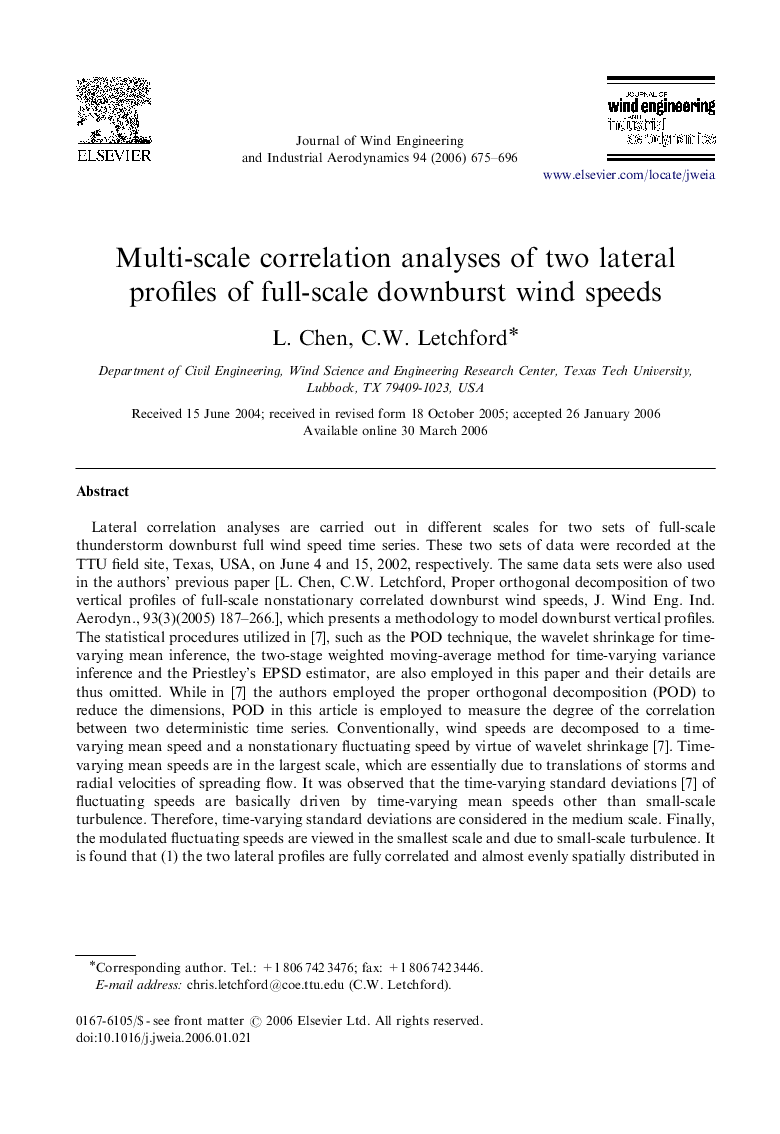| Article ID | Journal | Published Year | Pages | File Type |
|---|---|---|---|---|
| 293885 | Journal of Wind Engineering and Industrial Aerodynamics | 2006 | 22 Pages |
Lateral correlation analyses are carried out in different scales for two sets of full-scale thunderstorm downburst full wind speed time series. These two sets of data were recorded at the TTU field site, Texas, USA, on June 4 and 15, 2002, respectively. The same data sets were also used in the authors’ previous paper [L. Chen, C.W. Letchford, Proper orthogonal decomposition of two vertical profiles of full-scale nonstationary correlated downburst wind speeds, J. Wind Eng. Ind. Aerodyn., 93(3)(2005) 187–266.], which presents a methodology to model downburst vertical profiles. The statistical procedures utilized in [7], such as the POD technique, the wavelet shrinkage for time-varying mean inference, the two-stage weighted moving-average method for time-varying variance inference and the Priestley's EPSD estimator, are also employed in this paper and their details are thus omitted. While in [7] the authors employed the proper orthogonal decomposition (POD) to reduce the dimensions, POD in this article is employed to measure the degree of the correlation between two deterministic time series. Conventionally, wind speeds are decomposed to a time-varying mean speed and a nonstationary fluctuating speed by virtue of wavelet shrinkage [7]. Time-varying mean speeds are in the largest scale, which are essentially due to translations of storms and radial velocities of spreading flow. It was observed that the time-varying standard deviations [7] of fluctuating speeds are basically driven by time-varying mean speeds other than small-scale turbulence. Therefore, time-varying standard deviations are considered in the medium scale. Finally, the modulated fluctuating speeds are viewed in the smallest scale and due to small-scale turbulence. It is found that (1) the two lateral profiles are fully correlated and almost evenly spatially distributed in the largest and medium scales with more than 96% of the total energy; (2) they are uncorrelated in the smallest scale since the measurement locations are at least 263 m apart.
